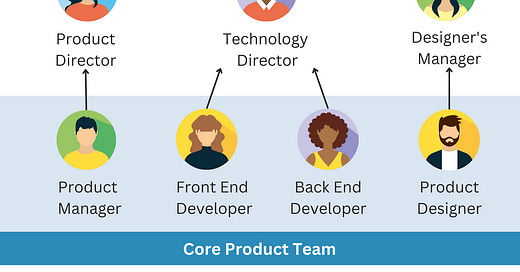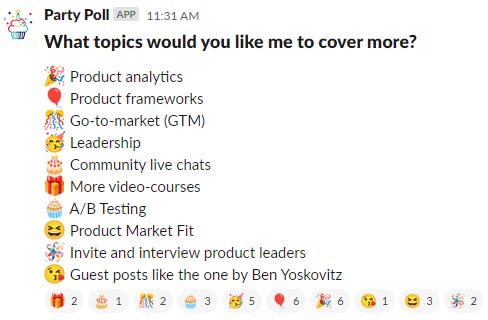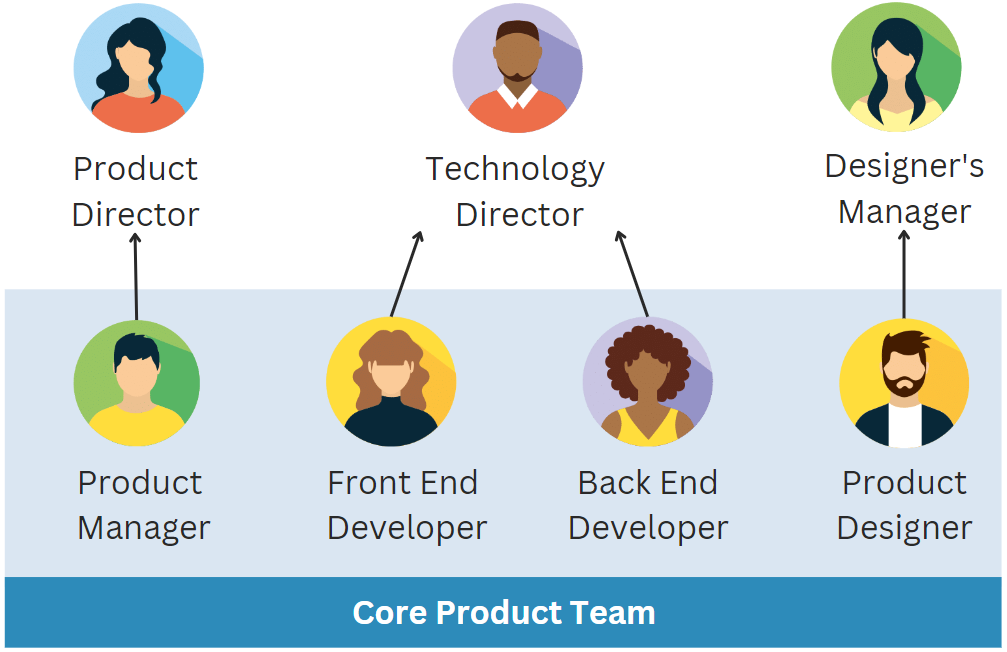Hey, Paweł here. Welcome to The Product Compass.
Before we dive in, here you can find the best issues of this newsletter.
Check out what you might have missed ;)
In today’s newsletter, I discuss leadership, one of the most important skills of a Product Manager. It’s one of the topics requested in a survey on our closed Slack community:
The Product Leadership Playbook
In Today’s newsletter:
🌎 Leader vs. manager. What’s the difference, and why does it matter?
🌎 What motivates us? 4 areas every leader should know about.
Freedom vs. maturity. How to strike the right balance
7 traits all great leaders I met had in common
Conclusions
First, let me explain the difference between a leader and a manager.
1. Leader vs. manager. What’s the difference, and why does it matter?
Your job title, Product Manager, might be a bit confusing.
As Marty Cagan explains, managers are responsible for two activity areas:
Coaching
Identifying people’s strengths and weaknesses.
Helping them to grow by training, providing resources, and support.
Setting professional goals that align with the company’s objectives.
Regularly assessing performance to monitor the progress, give feedback on what can be improved, and acknowledge successes.
Staffing
Interviewing candidates and evaluating their potential.
Hiring candidates based on the company’s goals and needs.
Replacing team members when necessary.
Onboarding new hires and ensuring they are fully integrated into the team.
As a Product Manager, you're not a manager to the designers or engineers, hence you might not have the specific expertise to coach or staff these roles.
To give you a rough idea, one of the many possible setups might be:
To be effective as a Product Manager, you must act as a leader. Good leaders influence others, inspire, and motivate them without excercising authority.
Importantly, being a leader is not a job title:
“If you’re a great manager, your people will make you a leader. They acclaim that, not you” - Bill Campbell, as quoted in Trillion Dollar Coach
While a leader doesn’t have to be a manager, you can’t be a good manager without being a good leader:
“Coaching is no longer a specialty; you cannot be a good manager without being a good coach.” - Bill Campbell, as quoted in Trillion Dollar Coach
Having both roles, leaders, and managers, is crucial for any organization.
2. What motivates us? 4 areas every leader should know about.
We are in the 21st century, yet some seem to be stuck in the age of the Industrial Revolution. They pay and demand obedience.
No wonder there is so much talk about the Great Resignation.
Let me say it loudly: we are not resources. Pencils are. People are not objects to be commanded and controlled. The ‘carrot and stick’ method, together with detailed procedures, will demotivate, not encourage, us in the long run.
To boost productivity, trust, and emotional engagement, leaders should focus on these four areas:
2.1 Purpose
As Simon Sinek explains in Start with WHY, the most important question leader must answer is “WHY.”
Why are we doing this? What’s our purpose? Why does it matter?
People can only become truly engaged and motivated when they see the "big picture" and feel they are contributing to something meaningful. When we feel connected to a greater mission and stand by our shared values, we feel energized, inspired, and truly alive.
A clear and compelling WHY can inspire and motivate everyone around you:
"If you are working on something exciting that you really care about, you don't have to be pushed. The vision pulls you." - Steve Jobs
You might love this talk by Simon Sinek, just as I did:
But how do you create such a compelling vision? Check out Point 3.1 from Debunking 17 Common Misconceptions in Product Management.
2.2 Autonomy
Nobody enjoys being micromanaged. Having someone looking over your shoulder is frustrating and demotivating. Autonomy and trust enable creativity and provide deep, intrinsic motivation.
So instead of giving people precise instructions, empower them, invite them to co-create goals, and let them find the right path.
What does this look like in practice?
In No Rules Rules, Reed Hastings and Erin Meyer highlight the most critical aspect of Netflix's culture - leading with context, not control.
Understanding the context (vision, strategy, and goals) allows others to make good, autonomous decisions. Without the context and people committed to common objectives, empowerment is wasteful.
A simple explanation:
I need to admit that I still make mistakes and work to improve my leadership. At the same time, over the years, I concluded from my mistakes that I should try to trust more than I feel comfortable with.
As Ernest Hemingway said:
"The best way to find out if you can trust somebody is to trust them." - Ernest Hemingway
Remember, empowerment doesn't mean “delegate and forget.” It's about being present and ready to support your team when they need it.
2.3 Psychological safety
The importance of psychological safety can't be stressed enough.
In Amy Edmondson's book The Fearless Organization, she defines it as "a shared belief held by members of a team that the team is safe for interpersonal risk-taking."
Considering how much time we spend at work, it becomes crucial for us to feel comfortable voicing our opinions, sharing ideas, and admitting mistakes. Without fear of retribution or being perceived as incompetent.
Psychological safety is not about avoiding any conflicts. Instead, it's about the right to be open and transparent, respectfully challenge others’ ideas, and explore diverse perspectives.
In psychologically safe environments, everyone knows that their thoughts and feelings matter. They are unafraid to try new things, take small risks, and experiment. And they can truly innovate.
So, as you lead, create a safe space where your team can be human, can freely laugh and cry, experience both successes and setbacks and feel encouraged to think and share their ideas.
That's where the magic happens.
2.4 Mastery
Moving on to the last aspect: mastery.
Recall those satisfying moments when you finally cleared a challenging level in your favorite video game or mastered using a complex character ability?
It felt good, didn't it?
Daniel Pink nailed this feeling in his book Drive when he defined mastery as "the desire to get better and better at something that matters."
That's it. It's not about being the best. It's about becoming better.
For more about this, watch Daniel’s Ted talk:
Now, let's paint a scenario. A unique bug appears in the software. The engineer who spots it feels intrigued, takes it as a challenge, and resolves it.
That's mastery in action. That’s the motivation.
It's important to recognize and acknowledge these achievements.
3. Freedom vs. maturity. How to strike the right balance
Keep reading with a 7-day free trial
Subscribe to The Product Compass to keep reading this post and get 7 days of free access to the full post archives.





